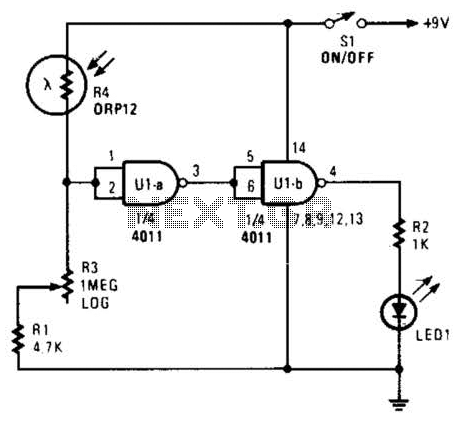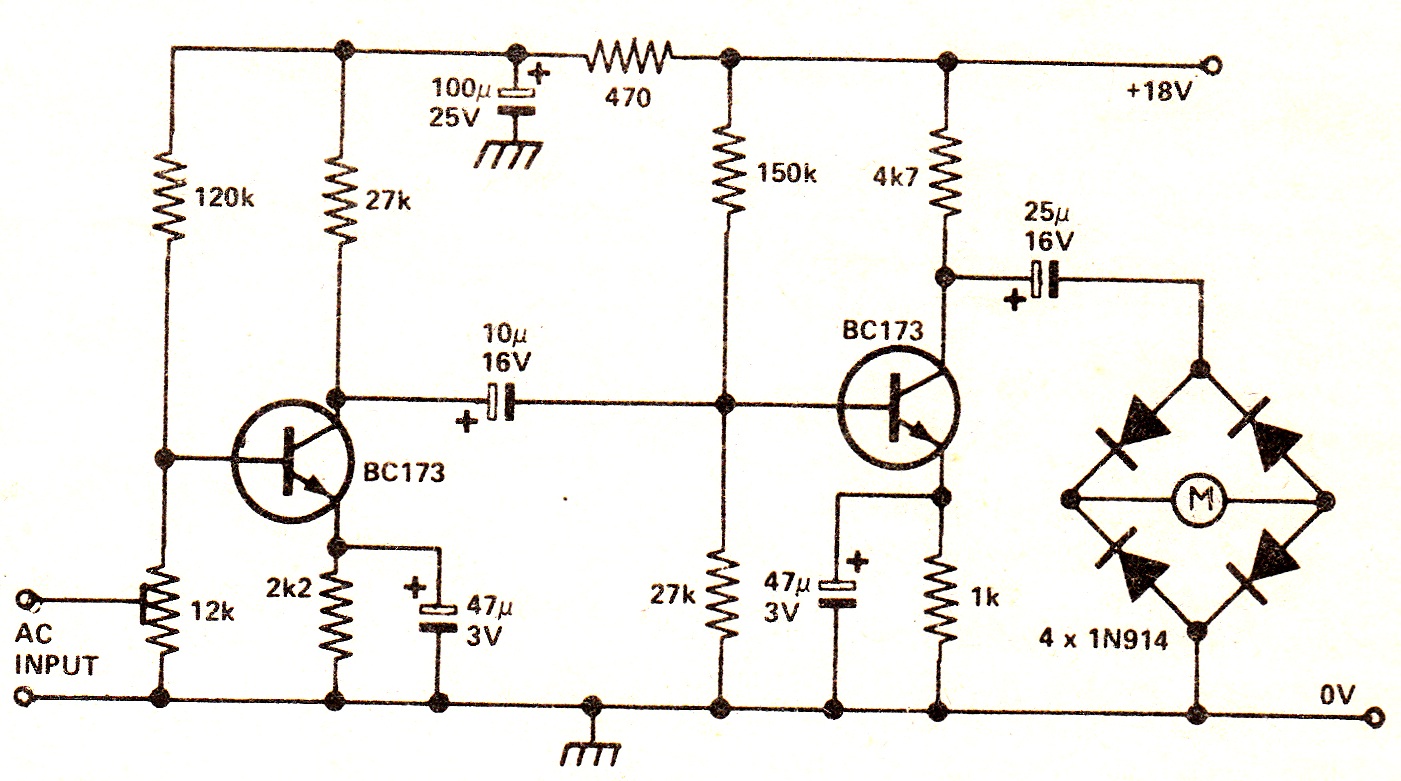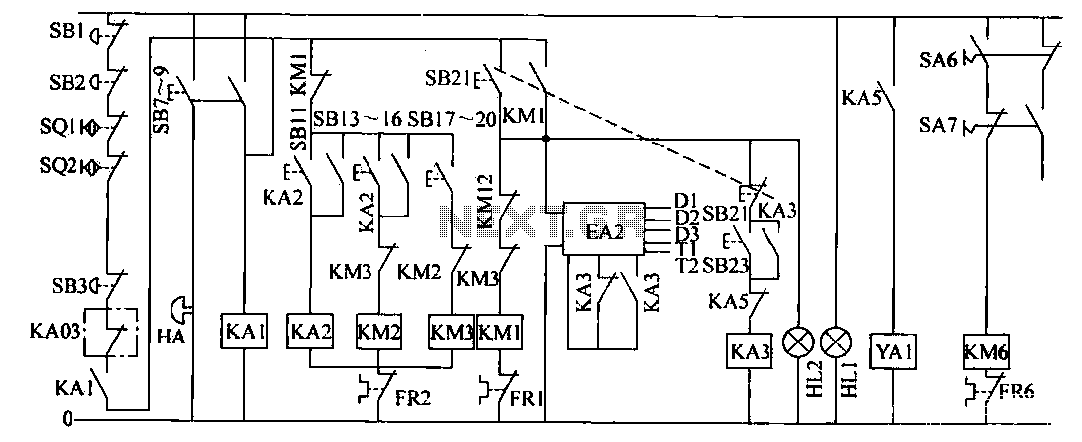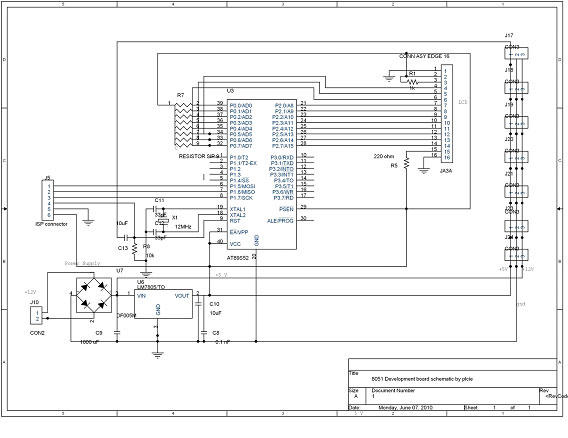
Automatic light activated switch circuit
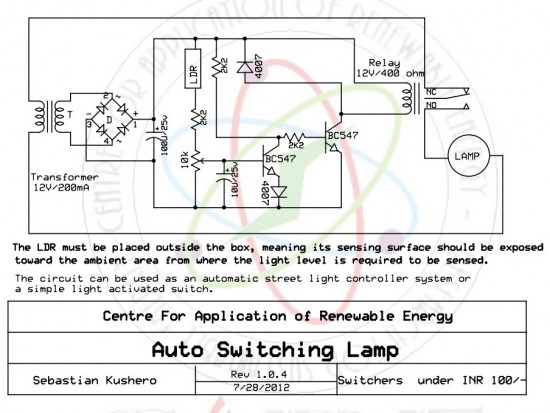
The circuit is designed to switch off a specific lamp or a group of lamps based on varying ambient light levels. Once constructed, it will turn off a lamp at dawn and turn it on at dusk. The power supply consists of a standard transformer, a bridge rectifier, and a capacitor network, which provides a clean DC voltage to the circuit. The light-dependent resistor (LDR) should be positioned outside the enclosure, with its sensing surface exposed to the ambient environment to accurately detect light levels. This circuit can function as an automatic streetlight controller system or a simple light-activated switch.
The described circuit utilizes a light-dependent resistor (LDR) as the primary sensor to monitor ambient light conditions. When the light intensity falls below a predefined threshold, the LDR's resistance decreases, triggering the circuit to activate the connected lamp(s). Conversely, when the ambient light increases, the resistance of the LDR increases, causing the circuit to deactivate the lamp(s).
The power supply section is crucial for ensuring stable operation. It typically includes a step-down transformer to reduce the AC mains voltage to a lower level, a bridge rectifier to convert AC to DC, and a filter capacitor to smooth the output voltage. This clean DC voltage is essential for the reliable operation of the circuit components, including the LDR, transistors, or relays used for switching.
In practical applications, the LDR should be installed in a location where it can accurately gauge the surrounding light conditions, such as on a streetlight pole or in a garden. The circuit can also incorporate additional components like potentiometers to adjust the sensitivity of the LDR, allowing customization based on specific environmental conditions.
For enhanced functionality, the circuit may include a timer or a microcontroller to provide more advanced features, such as programmable lighting schedules or integration with other smart home systems. This versatility makes it suitable for various applications, including residential lighting control, street lighting, and garden lighting systems, ultimately promoting energy efficiency by ensuring lights are only active when necessary.The circuit can be used for switching OFF a particular lamp or group of lamps in response to the varying ambient light levels. The unit once built can be used for switching OFF a lamp when dawn breaks and switching it ON when dusk sets in.
The power supply is a standard transformer, bridge, capacitor network, which supplies a clean DC to the circui t for executing the proposed actions. The LDR must be placed outside the box, meaning its sensing surface should be exposed toward the ambient area from where the light level is required to be sensed. The circuit can be used as an automatic street light controller system or a simple light activated switch.
🔗 External reference
The described circuit utilizes a light-dependent resistor (LDR) as the primary sensor to monitor ambient light conditions. When the light intensity falls below a predefined threshold, the LDR's resistance decreases, triggering the circuit to activate the connected lamp(s). Conversely, when the ambient light increases, the resistance of the LDR increases, causing the circuit to deactivate the lamp(s).
The power supply section is crucial for ensuring stable operation. It typically includes a step-down transformer to reduce the AC mains voltage to a lower level, a bridge rectifier to convert AC to DC, and a filter capacitor to smooth the output voltage. This clean DC voltage is essential for the reliable operation of the circuit components, including the LDR, transistors, or relays used for switching.
In practical applications, the LDR should be installed in a location where it can accurately gauge the surrounding light conditions, such as on a streetlight pole or in a garden. The circuit can also incorporate additional components like potentiometers to adjust the sensitivity of the LDR, allowing customization based on specific environmental conditions.
For enhanced functionality, the circuit may include a timer or a microcontroller to provide more advanced features, such as programmable lighting schedules or integration with other smart home systems. This versatility makes it suitable for various applications, including residential lighting control, street lighting, and garden lighting systems, ultimately promoting energy efficiency by ensuring lights are only active when necessary.The circuit can be used for switching OFF a particular lamp or group of lamps in response to the varying ambient light levels. The unit once built can be used for switching OFF a lamp when dawn breaks and switching it ON when dusk sets in.
The power supply is a standard transformer, bridge, capacitor network, which supplies a clean DC to the circui t for executing the proposed actions. The LDR must be placed outside the box, meaning its sensing surface should be exposed toward the ambient area from where the light level is required to be sensed. The circuit can be used as an automatic street light controller system or a simple light activated switch.
🔗 External reference

